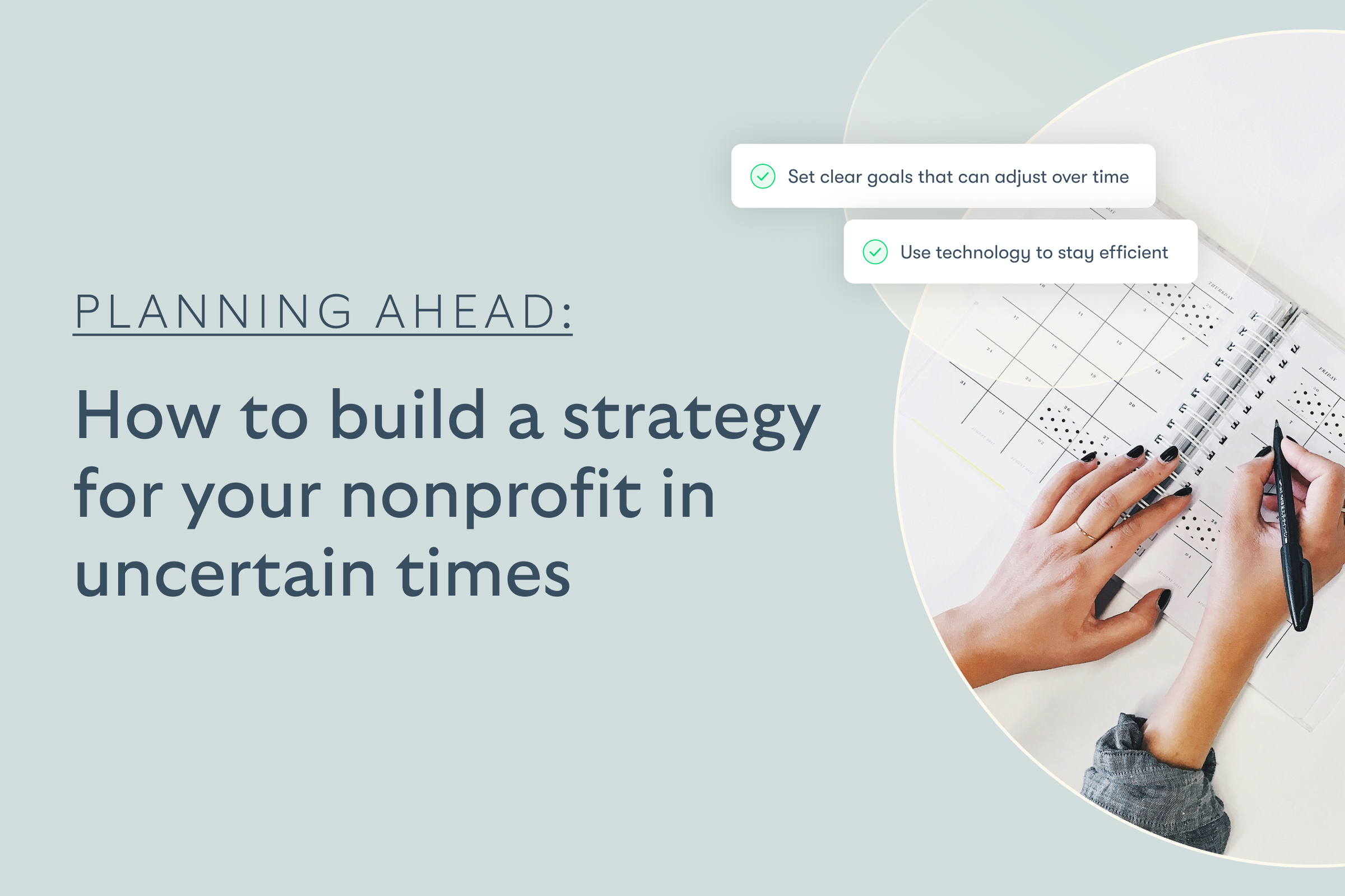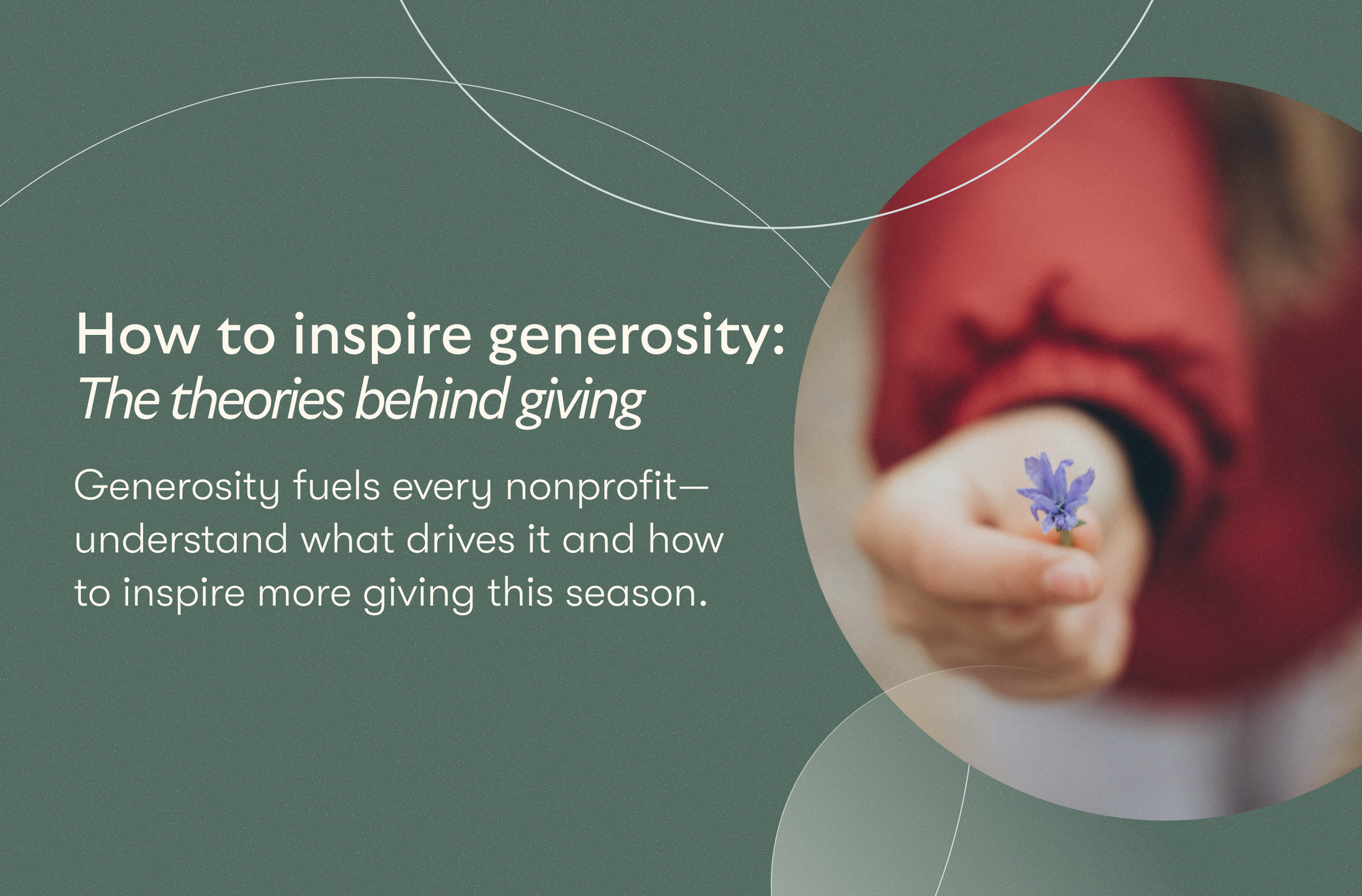Select and customize the fundraising method best suited for your organization
BetterWorld seamlessly integrates with both online and in-person auctions
Impress donors with creative raffle items and elegant online raffles
Create attractive donation pages that maximize donor impact and boost online giving
Planning ahead: Creating a resilient strategy for your nonprofit in uncertain times
By Colin Hunter

If you’ve spent any time in the nonprofit world, you know that uncertainty isn’t the exception—it’s the norm. Whether it’s economic changes, shifts in donor support, or rising costs, you’re constantly navigating change. And while hope is important, it’s not a strategy.
That’s why having a clear nonprofit strategy is essential. Recession planning is not about panic or pessimism. It’s about being proactive, so you can protect your mission and your team even when things get rocky.
In this blog, we’ll walk you through how to build a strategy that is practical and flexible; something that helps you move forward with confidence, no matter what’s around the corner.
Why Uncertainty Affects Nonprofits Differently
Nonprofits don’t work the same way as businesses. They depend on donations, grants, and community support, not product sales or investors. So when the economy takes a hit, it hits nonprofits differently.
A dip in the economy can lead to fewer donations, delayed grant decisions, or smaller gifts from donors who are cutting back.
That’s why recession planning is so essential for nonprofit leaders. If you wait too long to respond, the impact on your programs, staff, and outreach can pile up fast.
The other thing that makes things tricky is trust. Nonprofits rely on the public to believe in their work. If you’re not clear about your plans or how you're handling tough times, supporters may hold back.
That’s where a solid nonprofit strategy comes in. It helps your team make smart choices even during uncertainty and shows donors that your mission won’t stop just because times get tough.
Strategic planning for nonprofit organizations doesn’t have to be complicated. It just means looking ahead, being honest about the risks, and having a plan ready when things change.
Start With a Risk Assessment
Before you build a strong nonprofit strategy, it helps to know where your nonprofit stands. That means doing a simple risk assessment. The goal here isn’t to predict the future—it’s to understand what could go wrong and what that might mean for your work.
Start by looking at what parts of your nonprofit will most likely be affected during a tough time.
For most groups, that includes funding, staffing, and programs. If donations drop or a grant gets delayed, which programs would be at risk first? If key staff members leave, what gets paused?
It also helps to look at past data. Were there times your budget got tight? Did your fundraising dip in a particular season or during a past crisis? These patterns can tell you a lot about where you're most vulnerable.
Bring your leadership team and board into the conversation. They can help spot risks you might miss and offer different points of view. This step also keeps everyone on the same page as you move into planning.
This step is key to recession planning and keeping your nonprofit finances in check. Once you see the weak spots, you can build a strategy to protect them.
Set Clear Goals That Can Adjust Over Time
Goals give your nonprofit direction. But during uncertain times, those goals need room to shift. Here’s how to set goals that keep you on track, even if things change:
- Break long-term goals into smaller steps you can reach in 3 to 6 months. This makes them easier to manage and adjust.
- Use flexible targets, like income ranges instead of exact dollar amounts. This helps during recession planning when donations may fall.
- Keep checking in on your goals every few months to see what’s working and what needs to be adjusted.
- Stay focused on your mission, even if your projects or timelines have to change.
- Use your goals to guide your nonprofit strategy, not box it in.
Strategic planning for nonprofit organizations works better when goals aren’t too rigid. A flexible plan gives you more options and helps your team move forward, even in uncertain times.
Want to see what tools can actually help during uncertain times? Find out the Essentials Tools to Support Your Nonprofit Through Challenging Times.
Build a Financial Cushion and Flexible Budget
Money can get tight quickly during a downturn. That’s why your nonprofit needs a budget that can bend without breaking.
Start by setting aside a small emergency reserve. Even a few months of basic costs can give you time to adjust if funding slows down.
Next, look at your budget and see where you can shift things around. Focus spending on programs that are essential to your mission. Pause or scale back things that can wait.
It’s also smart to check your cash flow and monthly burn rate. Know how much money is coming in and going out each month. That way, you can spot problems early and avoid surprises.
Building this cushion supports your broader nonprofit strategy by giving you more options when times are tough. Remember, recession planning is about improving your budget through any season.
Strengthen Donor and Stakeholder Relationships
During uncertain times, strong relationships can help steady your nonprofit. People are likely to stick with you if they feel informed and valued. Here’s how to keep that connection strong:
- Share regular updates with donors and stakeholders, even if there’s no big news. Clear and honest communication builds trust.
- Use simple success stories or short impact reports to show where their support is going.
- Check in with long-time supporters just to say thanks, not always to ask for money.
- Be upfront about challenges. People respect transparency, especially during recession planning.
- Lay the groundwork before asking for increased help. Strong ties make it easier to talk about needs later.
This kind of communication is part of good nonprofit strategy.
Try BetterWorld’s robust suite of charity & nonprofit fundraising tools for FREE!
Create a Simple Plan for Program Changes
It’s tough to make big decisions in the middle of a crisis. That’s why it helps to have a basic plan in place for changing or adjusting programs. It gives your team something to lean on when things start shifting.
Start by ranking your programs based on mission impact, cost, and flexibility. Ask yourself:
- Which programs are essential to your core mission?
- Which ones could be paused or scaled back if funds dip?
- Are there any that could grow if extra support comes in?
Then set a few “what if” rules. For example:
- If funding drops by 20%, pause outreach events but keep direct services running.
- If staff hours need to be cut, combine roles in low-impact programs.
Next, create a simple decision-making chart. Define who makes the call (executive director, board, program manager), what input they need, and how fast changes should happen.
Don’t forget to write everything down and keep it easy to access. Include:
- A checklist for scaling programs up or down
- Contact lists for staff or partners who would be affected
- Basic templates for notifying stakeholders about program changes
Use Technology to Stay Efficient
When time and money are tight, the right tools can make a big difference. You don’t need a fancy setup, just simple tech that helps you work smarter.
Start by using digital tools for donor management. This help track giving history, send thank-you emails, and schedule follow-ups without losing track. They also help you keep your outreach going strong, even if you can't meet in person.
Look at your day-to-day tasks. Are there things your team does over and over, like sending receipts or posting updates? Automating those small jobs can free up hours each week and cut down on mistakes.
Also, use dashboards or basic reports to track your progress. It's easier to shift your approach when you can see what’s working (and what’s not). This is key for recession planning, where quick decisions matter.
Why not try fundraising for free, especially when every penny you save counts? BetterWorld helps you raise funds using multiple tools, all in one place.
Use our Modern Fundraising Tools and Online Fundraising Software for auctions, ticketing, crowdfunding, and more—all online and easy to set up.
You can also collect donations through our simple Donation Forms, which include automated management and recurring giving prompts to help you raise even more.
Sign up today and get access to everything for free, with no hidden fees.
Review and Adjust Regularly
Now that you know how to plan for a recession, there’s one more step that keeps everything on track—regular review and updates. Planning isn’t something you do once and leave on the shelf. It needs attention as things shift around you.
Set a schedule to review your strategy—every month or at least once a quarter. Look at your goals, program changes, and budget. Are they still a good fit for what’s happening right now? Use input from your team, donors, and outcomes to guide small changes that make a big difference.
Keep your board and staff in the loop during every review. When everyone understands what’s working and what isn’t, your nonprofit stays in sync and ready for what comes next.
Recession planning works best when it’s part of an ongoing process. Checking in often helps you stay flexible and confident, even if conditions change.

Join 105,000+ amazing nonprofits, organizations, and fundraisers on BetterWorld

Let our FREE fundraising tools help you raise more funds with less effort








